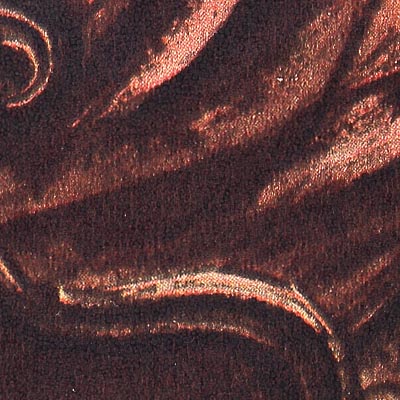
"Nobody is more surprised than myself at what occasionally results."
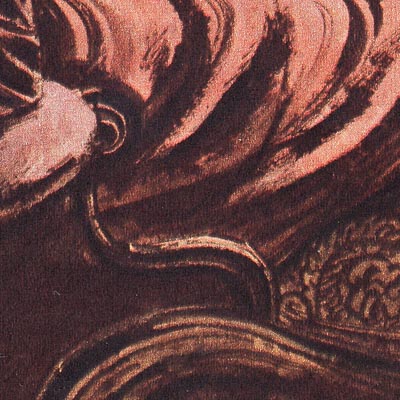
"After the picture is pretty well established in black, I introduce dilutions of gray, colored inks, analine dyes, and grease crayon."
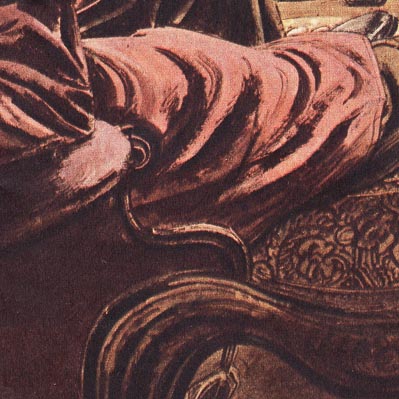
"I thumb it, scratch it with razor blade, and finally employ gouache to articulate those passages which require it."
"It is a method which I recommend to no one, for the failures are more numerous than the successes."
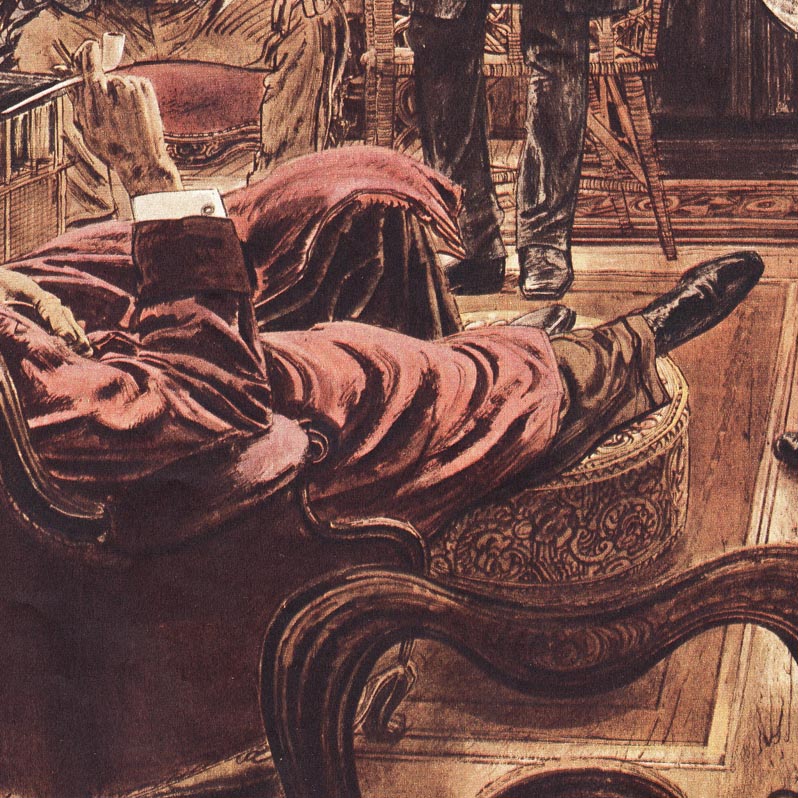
"The only advantage is that the drawing is kept in a fluid state and can progress as a whole rather than be completed piecemeal. I think that working in transparencies allows a greater tonal range, and, for me at least, a more spontaneous result."

"I admit that working in this way often results in periods of confusion, but I don't consider this altogether bad."

"Through these I often arrive at a solution which is far more interesting to me than those drawings which evolve with no labor pains."
- Robert Fawcett in a 1946 interview for American Artist magazine
Below, a few more pieces by the artist.



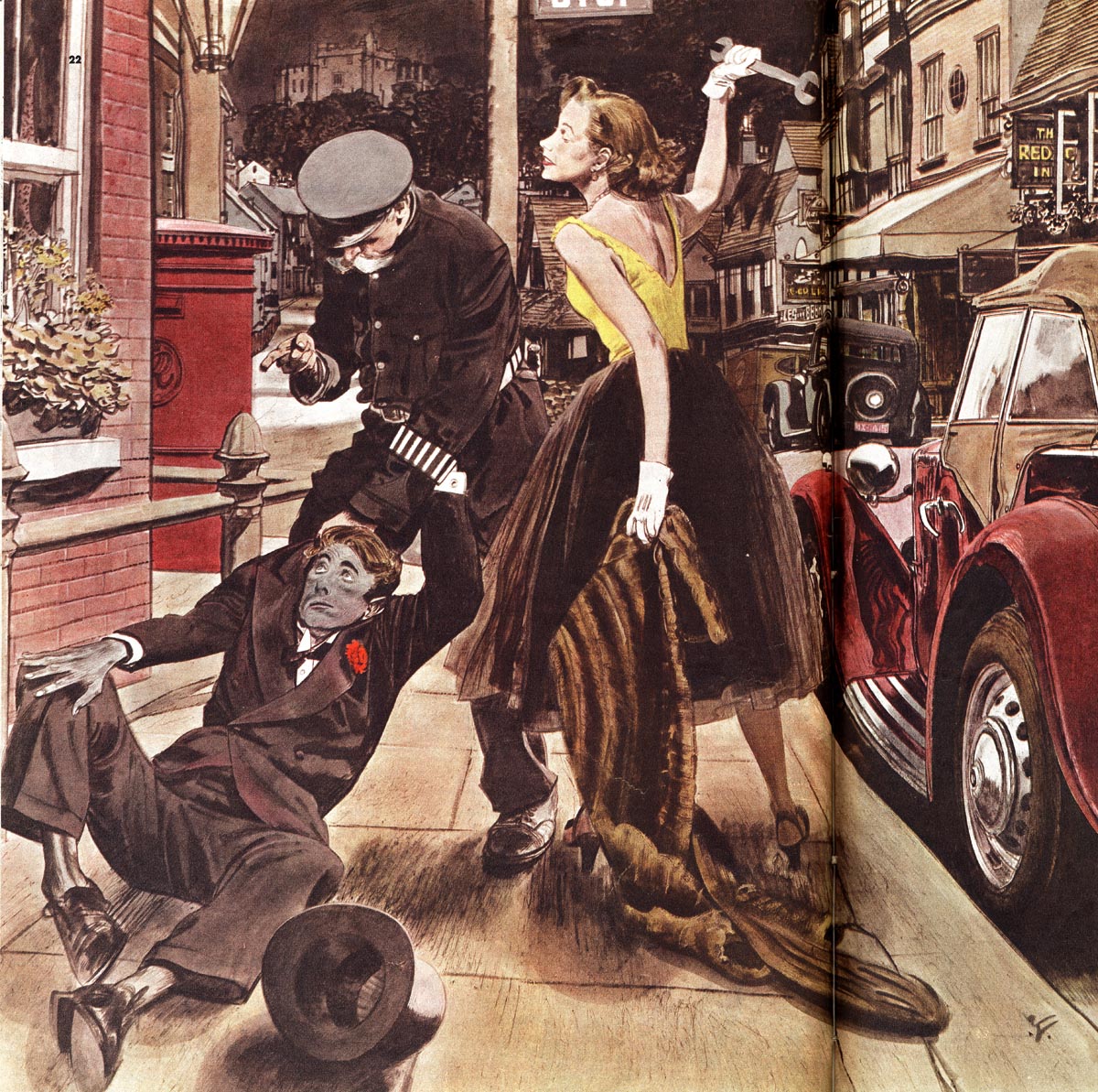


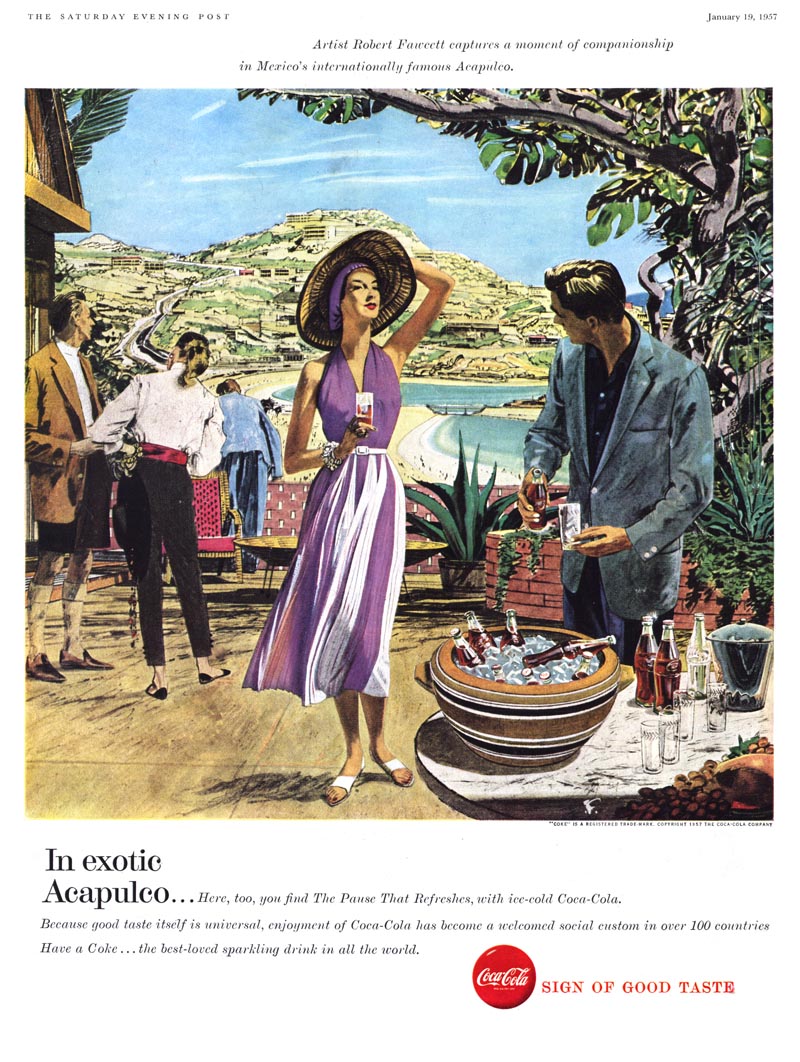
* My Robert Fawcett Flickr set.
* Many thanks to Heritage Auctions for allowing me to use the scan of the cars parked at the diner in this post.
* There is a show of 25 Robert Fawcett originals opening on Saturday, May 22nd at Gallery Nucleus in Alhambra, CA.
Fawcett was not considered one of the great innovators in illustration, but he sure knew how to put a picture together and make it work. By his description of how he approached his technique, he obviously was not looking for a full blended value range. And, as Leif so aptly displays in the closeup shots, he used abstract passages to describe literal texture and form. Ben Stahl, also one of the original Famous Artists School faculty members, had that quality in his latter illustrations, but with less effective draftsmanship displayed. In reading about both illustrators, my impression is that Stahl had a similar personality as Fawcett, and was also very independent in their approaches to illustration.
ReplyDeleteTom Watson
You may be interested to know that Stahl had a copy of Fawcett's Advanced famous Artist's Course.
ReplyDelete"...arrive at a solution which is far more interesting to me than those drawings which evolve with no labor pains."
ReplyDeleteThat was very comforting to read.
Leif, I had the pleasure of being there when Bernie Fuchs saw the original of that Sherlock Holmes picture you have featured. He looked at it up close for a long time in silence, and you could tell he was assessing it, one old pro sizing up another. Finally he turned to me and said, "That's about as good as drawing gets, isn't it?"
ReplyDelete